Copyright is a form of intellectual property that serves to protect original work – this can take many forms, which we will explore below.
The creator of the work is usually the copyright owner and that individual (or company) is given exclusive rights over their work.
While intellectual property laws are country-specific, the importance of protecting original creations is widely recognized worldwide.
Copyright generally gives the creator and owner the exclusive right to reproduce, distribute, display, and make adaptations to their work. This right does expire after a few years, which vary from jurisdiction to jurisdiction, after which the work becomes part of the public domain.
Table of Contents
PRO TIP: Don’t waste your time and take the guesswork out of the legal jargon with this personalized DMCA policy generator trusted by over 200,000 businesses.
What is a Copyright Notice?
A copyright notice is a statement used to warn your users or readers that the work that they are consuming is your intellectual property and that you hold rights to it.
In other words, its purpose is to publicly state and claim ownership of the original work that you have created and its related rights.
A copyright notice is usually fairly simple and consists of the word “copyright” or the associated symbol, the name of the owner, and the year of first publication or creation. We will dissect a typical copyright notice and provide examples below.
Do You Need to Register Your Copyright?
No, you do not need to register your copyright for it to exist. It is free and automatically arises with the simple creation of your work – no formalities are required.
However, you may choose to do so to make it easier to enforce your rights should you wish to bring forward a copyright infringement lawsuit against a perpetrator and claim financial damages.
For example, in the United States one must register their copyright with the U.S. Copyright Office in order to be able to enforce their rights in court should there be an infringement.
In some countries, including the United States, registration might also affect the amount of money that you could receive in damages as well as allow you to recover attorney fees.
Lastly, having it registered on a publicly-accessible database could make it easier for someone to get in touch with the owner of the copyright to request permission to use the content.
In other words, registration is simply an extra step that you can take to create a public record of your ownership. Note, however, that registration is not possible in all countries and that you must therefore refer to national laws and processes for more details.
Are Copyright Notices Legally Required?
The short answer is no.
Legally, you do not need to have a copyright notice displayed on your work for your rights to exist, be protected, and be enforceable.
Copyright automatically arises from the moment original work is created and lasts for a certain number of years, which varies depending on your jurisdiction.
Under the Berne Convention for the Protection of Literary and Artistic Works, as a general rule (and there are some exceptions), the duration of protection given should be the life of the author plus an additional 50 years. However, countries do have some flexibility and some have decided to grant longer durations according to the type of content created.
In the United States, for example, work created on or after January 1, 1978, is protected by copyright for the duration of the life of the author plus 70 years.
Who Needs a Copyright Notice and What Types of Content Should Have One?
Anyone who produces proprietary or original content would be wise to have a copyright statement as, while it is not legally required, it is a simple solution and, as always, it is better to be safe than sorry.
As mentioned above, any type of original content that you create on a tangible medium (therefore allowing it to be reproduced or shared) would benefit from having a copyright notice stating your ownership of said content.
This includes books, poetry, films and movies, songs or sound recordings, architectural works, software, blog posts, website content, or art, among others.
What are the Benefits of Copyright Notices?
Having a copyright notice in place makes it clear to your users that the content is your own and lets you decide which rights you wish to keep over your work. You could specifically mention that it should not be shared, reproduced, or modified without your permission.
Should someone infringe your copyright, you could specifically mention in court that they should have known better as you had put them on notice.
While there is no guarantee that having a copyright notice will actually help your case, it could make it harder for the copyright infringer to claim ignorance and potentially be an argument for you to claim more damages.
For that reason, copyright notices are often used as a deterrent against unauthorized use.
Moreover, having a clear copyright notice on your content makes it easier for someone to contact you and request your permission to use your work legally.
How to Write a Copyright Notice Correctly?
A copyright notice should include the following elements:
Copyright Symbol
Most of us are familiar with the copyright symbol, as it appears wherever we look on the Internet or whenever we open a book or a magazine.
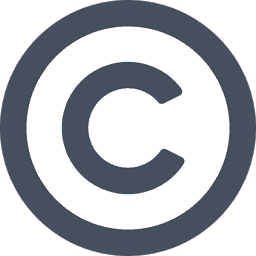
Graphic design platform Canva uses the copyright symbol:
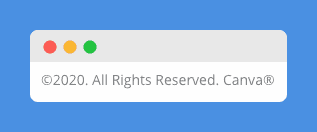
You may also choose to use the actual word “copyright” as Thinkific does in the footer of their homepage:
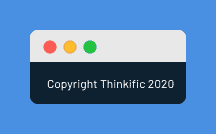
Copyright Date
As you will have noticed from the examples above, a year is mentioned in the copyright notice. This is the year of publication and not necessarily the date on which the work was created.
American newspaper The New York Times displays the following notice on their homepage, on which its columnists share daily news and opinions:

Other websites store content that dates back a few years as well as content that is frequently updated. In that case, the copyright notice can cover a period of a few years by using a date range.
Here is the statement that appears on online classified ads website Kijiji’s website:

And on Copyblogger’s website – note that it uses both the copyright symbol and the word itself as well as a date range:

Copyright Author’s Name
Your statement should include the name of the person or organization that has created or that legally holds the copyright over the content that you wish to protect.
Luxury retailer Nordstrom names its company as the copyright owner:
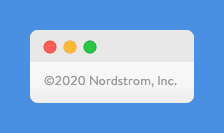
Copyright Statement of Rights
This is where you, as the copyright owner, specify which rights you wish to retain over your work.
We frequently see the words “All Rights Reserved” but, sometimes, the expressions “Some Rights Reserved” or “No Rights Reserved” are used.
By using “all rights reserved” the owner of the copyright makes it clear that they wish to retain all rights given to them under the law.
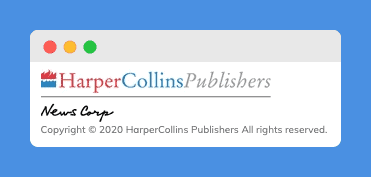
By using “some rights reserved” they inform users that they wish to share limited and designated usage rights with the public – usually under the condition that appropriate credit is given to the owner.
This is an interesting option for people that want to see their work shared, adapted, or reused by the general public. It is also useful to specify or restrict the circumstances under which the work can be used.
For example, you could say that your work can be shared and reproduced but for non-commercial use only.
This principle was developed by a non-profit organization called Creative Commons that wanted to encourage and make it easier for people to share their academic and creative work with the world all while retaining ownership and some rights over their creations.
The Human Rights Data Analysis Group displays the mention “some rights reserved” on its homepage and offers the following explanation:

Conversely, by using “no rights reserved” the creator is putting their work out into the public domain as much as legally possible by waiving their rights under copyright law.
This content is usually identifiable by the following symbol:
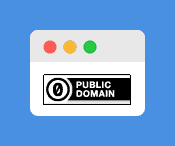
This is often used in cases where the copyright owner wants as many people as possible to benefit from their work, for example, historical institutions and museums, researchers, or academic institutions.
Where to Display Your Copyright Notice?
There are no specific rules as to where exactly you should display your copyright statement. However, you should make sure that it is clear and conspicuous so that your users are actually put on notice.
This could mean displaying it in the:
Website Footer
This is probably the most popular way to display a copyright notice. When surfing the web, you will see that most websites have a copyright notice in the footer of their homepage. You could, of course, decide to also include your notice in the footer of every single page.
Here is how VSCO does it:
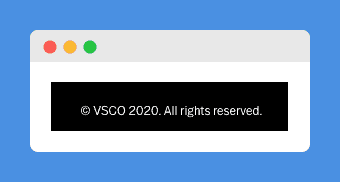
And Pinterest‘s notice does not specify which rights are reserved which, by default, means that all rights are reserved:
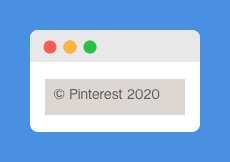
Terms and Conditions
Some companies choose to include a copyright notice as well as further information in their terms of conditions.
This is the case of IBM which places the following statement in its terms of use:
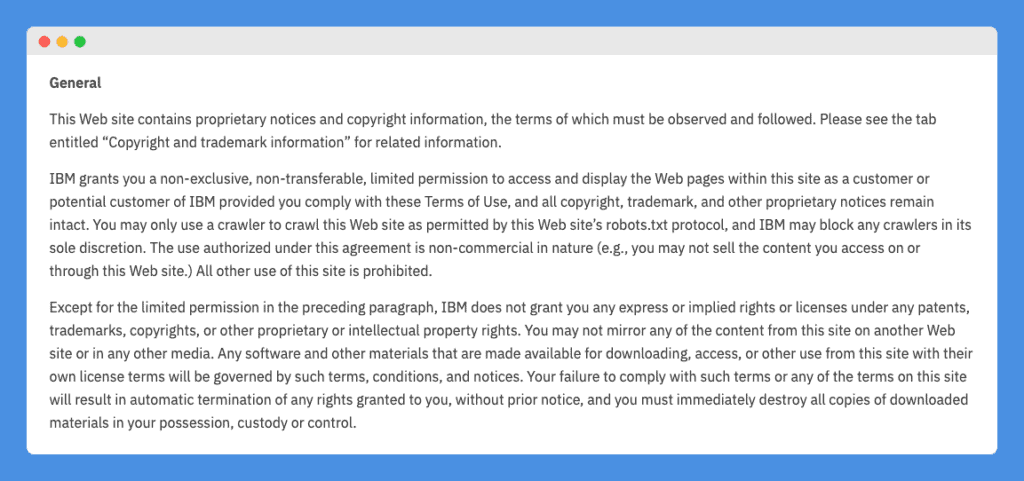
Directly on the Image or Video
Photo sharing websites and video streaming platform users often choose to place a copyright notice in the bottom right corner of their image or video to make it clear to the public that they own copyright over that specific piece of content.
For example, here is a photo of the Manhattan skyline on which the copyright symbol has been affixed:

By navigating to the website, one can purchase a single-use license to be able to use this photograph in print or advertising.
These website copyright examples demonstrate that there is more than one way to make it clear to your users that you are claiming full ownership over your work.
Sample Copyright Notices
Here are some copyright notice examples from popular websites and mobile applications.
Apple displays this copyright statement in the footer of its website; it includes all the major elements that we have seen earlier, namely the word “copyright” as well as the symbol, the publication year, the name of the copyright holder, in this case, Apple Inc., and the mention “all rights reserved”.

Video hosting and sharing platform Vimeo includes the following terms, again, in the footer of its website.

Since most of the website’s content is user-generated, the company also includes a hyperlink to a section of its website that is dedicated to copyright. On that page, website visitors can find the company’s full copyright policy, which includes detailed instructions as to how copyright holders should proceed to submit a request to have allegedly infringing materials available on the platform removed.
But copyright notices are not just for websites; there is original content subject to copyright in mobile applications.
Meditation and mindfulness application Calm includes a copyright notice in the information that appears when you search for it on the Apple App Store:
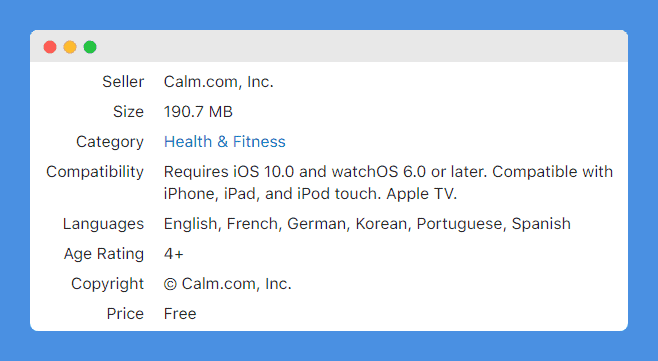
And here is how smartphone scanning app CamScanner displays its copyright notice inside its app (there is a section dedicated to copyright under the “About” tab):
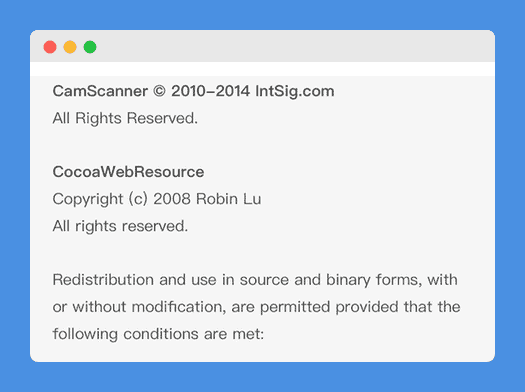
Final Words
Having a copyright notice on your website is a simple and effective way to remind your users and emphasize the fact that you hold copyright over your work. Especially considering that it is now easier than ever in the digital age that we live in for people to make copies and repurpose content found on the Internet.



